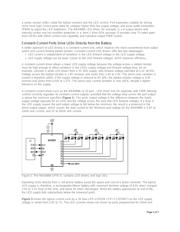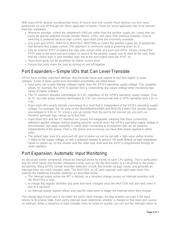herunterladen

Maxim > Design Support > Technical Documents > Application Notes > Communications Circuits > APP 3814
Maxim > Design Support > Technical Documents > Application Notes > High-Speed Interconnect > APP 3814
Maxim > Design Support > Technical Documents > Application Notes > Miscellaneous Circuits > APP 3814
Keywords: port expanders, GPIO, I2C, push-pull outputs, open-drain outputs, LED intensity control, constant-
current drive, MAX6966, level translation, transition detection,
APPLICATION NOTE 3814
Port Expanders for Flip-Cell Phones Save Cost and
Space
Apr 26, 2006
Abstract:
This article
discusses the features available in recent-design port expanders, which are particularly
relevant for the design of space-limited, cost-sensitive flip phones. The MAX6966 and MAX6965 drivers
illustrate the GPIO port-expander technology discussed in the note.
Introduction
The goal for general-purpose input output (GPIO) port expanders has always been to provide a modest
number of I/O ports in a small, low-cost IC. Parts offering 8 or 16 ports have been around almost as long as
the I²C and SPI serial busses to which they connect. Features offered by these early parts included simple
open-drain or push-pull outputs with limited drive current, and logic inputs with non-latching transition
detection. The smallest available package was a TSSOP.
This application notes discusses the features available in recent-design port expanders, which are particularly
relevant for the design of space-limited, cost-sensitive flip phones.
The Flip-Phone Interconnection Problem
The case of a flip phone comprises two halves that fold together like a clamshell (Figure 1). Baseband and
radio circuitry reside in the main section, usually the thicker half, together with the keyboard, battery, and
antenna. A common layout for compact phones places a large display on the inside of the flip and a smaller
one on the outside, as shown. The outside display, often a trans-reflective LCD that is readable without a
backlight, operates at all times to show when the phone is idle and other status information. The flip enclosure
holds the phone earpiece, and in some cases other audio and ring-tone circuitry. Many designs also include a
camera module in the flip.
Page 1 of 7








